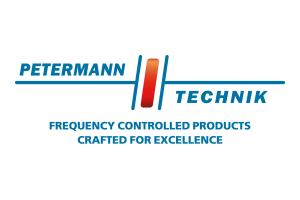Away from oil
GKN Automotive develops »green« lubricants
Lubricants are essential for the automotive sector because nothing works without them. Due to the enormous consumption, demands for green or recycled lubricants are becoming louder. GKN Automotive is now launching a project on »green« lubricants.
Not only do the pistons, cylinders, camshafts and crankshafts of an internal combustion engine need to be supplied with engine oil, a total of more than 200 moving parts of a passenger car require greases or lubricating stoffes to ensure proper operation.
These include, for example, the mechanics of the power window regulator as well as the seat adjustment of any passenger car. In the case of drive shafts in particular, attention must be paid to the exact composition of lubricants and their additivation, as they transmit the engine's torque from the transmission to the axles and wheels.
Lubricating stoffes ensure that drive shafts do their job reliably for the life of the car. They have to cope with temperatures ranging from -40° to +150° C, are exposed to extreme pressure loads, maintain their lubricity for years and also serve as heat dissipaters.
10,000 tons of greases per year
The British manufacturer GKN Automotive uses more than 10,000 tons of lubricating greases per year to fill its drivelines. This high demand can be explained by looking at each individual vehicle: a mid-size car requires around 800 to 1,000 grams of grease for the drive shafts, while a compact car requires up to 500 grams.
According to the National Lubricating Grease Institute (NLGI), the volume of the global lubricating grease market in 2021 was around 1.2 million tons. Due to this enormous consumption, the demands for green or recycled lubricating stoffes are becoming increasingly urgent.
In-house development of lubricating oils and greases required
Sealing systems and materials at GKN Automotive: »We have to optimize our carbon footprint during the manufacturing process, and more and more customers are now demanding this,« says Thorsten Scholtz, head of the development department for lubricants, sealing systems and materials at GKN Automotive. »Whereas in the past we were purely a purchaser of lubricating oils and greases, we are increasingly developing our lubricstoffe ourselves. In the case of oil-based mineral lubricating greases, we have already been very successful with our first in-house development, and two more products will follow in 2024.«
Electric vehicles require different lubricants
The increasing prevalence of electric vehicles must also be taken into account in the development and production of lubricating stoffes for drive shafts. Currently, GKN Automotive uses up to twelve different types of grease for a wide range of vehicle types. Weight, drive type and engine performance play a decisive role - the higher the acceleration values and torques, the more complex the requirements for the lubricant inside the drive shafts.
»Electric cars are currently designed to be very powerful, so we have to adapt our lubricating stoffe accordingly,« says Scholtz. »The right additives help us to tune them here and ensure optimum performance in particularly powerful electric vehicles. One of our tasks here as a development partner to automotive manufacturers is to develop and establish resilient service life models for our products in these vehicles.«
First product planned for 2024
Up to 80% of the grease used to lubricate drive shafts and sideshafts consists of mineral oil components, and this is where GKN Automotive sees great potential for »green« lubricants.
Dr. Christoph Lindlahr, Product Development Manager for Lubricants at GKN Automotive, comments: »We are in the middle of the development process for a sustainable, pflance-based lubricating grease. In 2024, we want to start the evaluation phase for a first product. If we can overcome the performance difference between mineral and pflance-based lubricants, we will have made great progress. Reducing the lithium content is also an important step toward the 'green' lubricating grease. Castor and rapeseed oil, for example, are proving to be promising alternatives to mineral oil-based greases, with the biggest challenge in the development of pflanzliche Schmierstoffen being temperature and oxidation stability and water resistance. In the long term, we expect to be able to replace around 50% of our consumption with sustainable products.«





